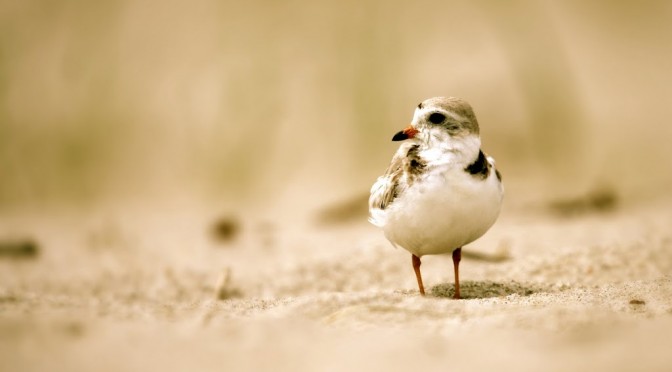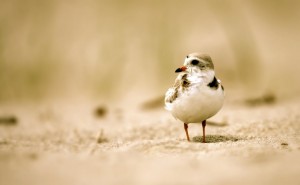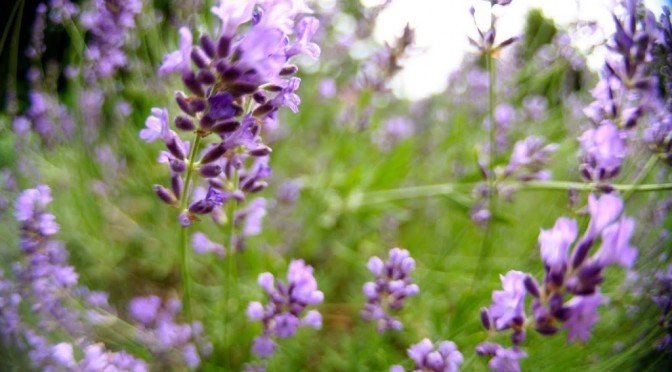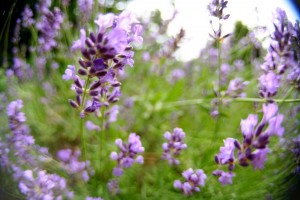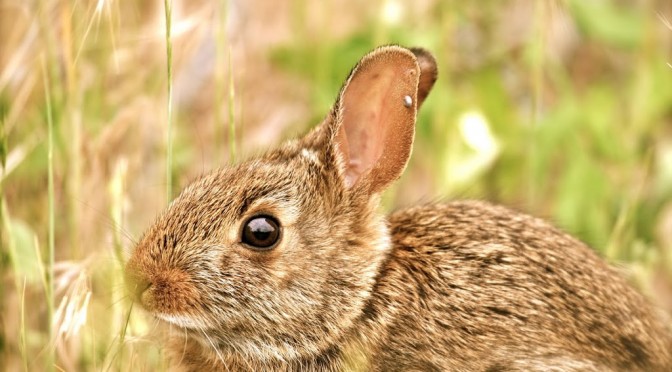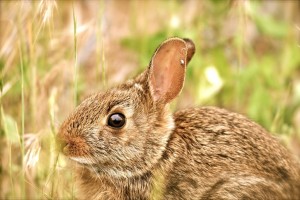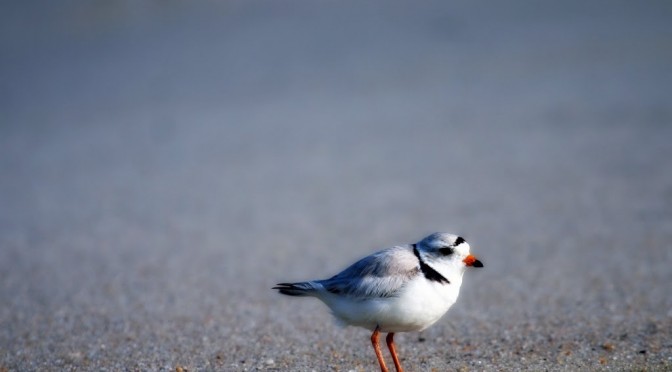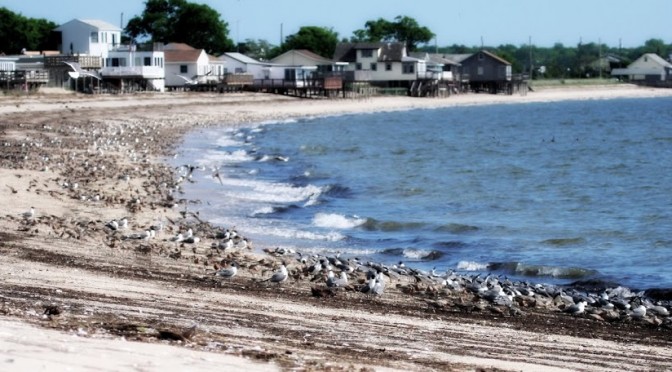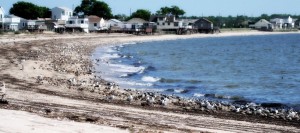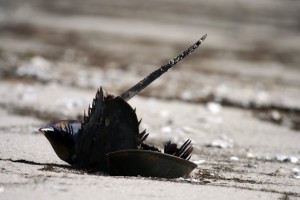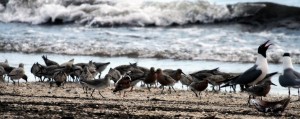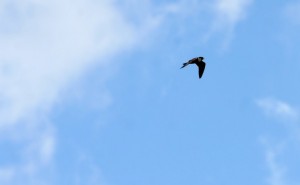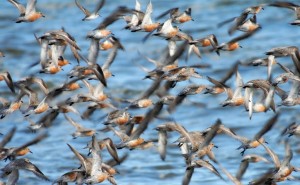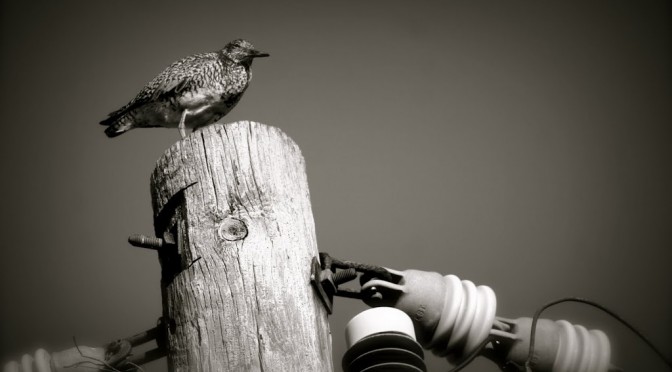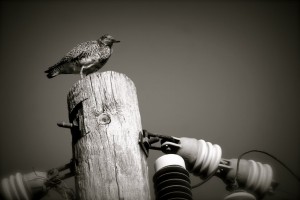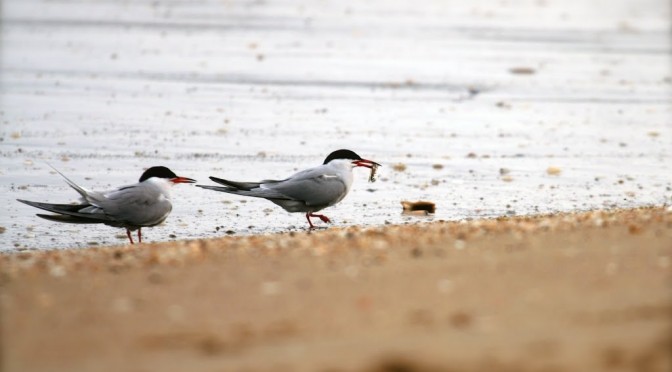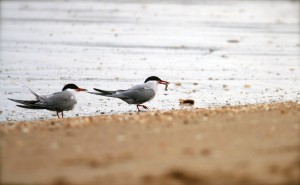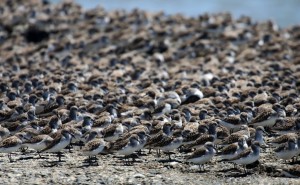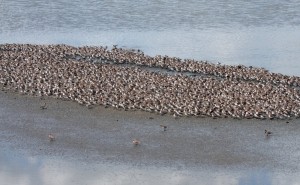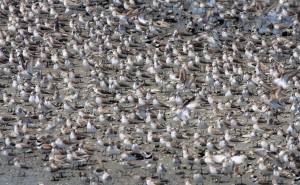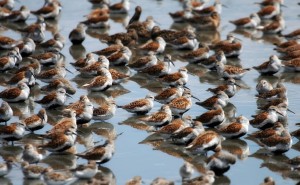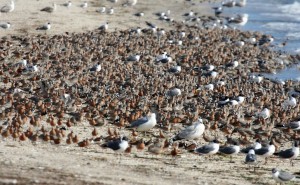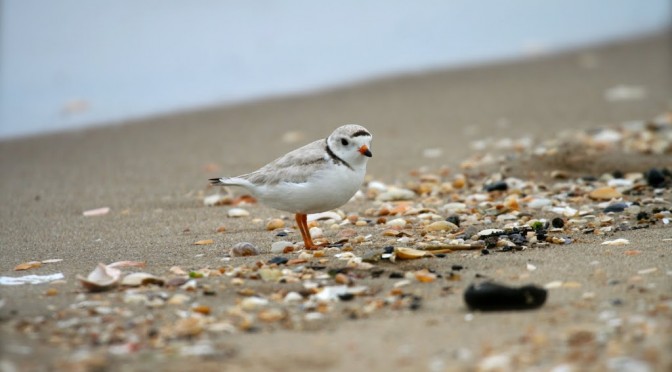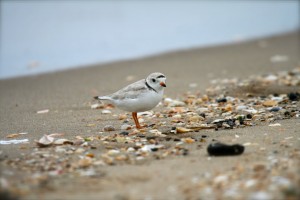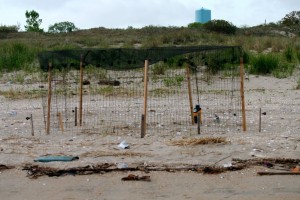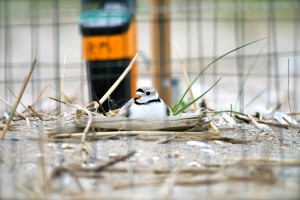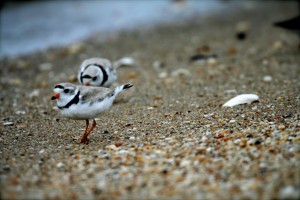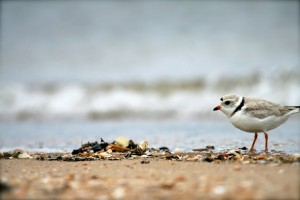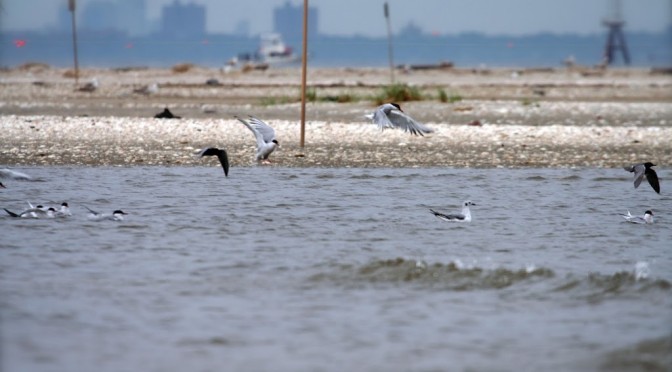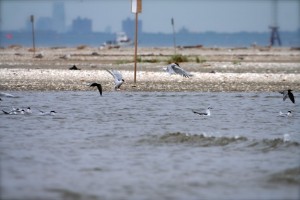I thought I’d take a minute to share some pix and an update on the Piping Plovers out at Sandy Hook. I got to spend some quality time with them on World Series Day when all the serious birders were sorting through the gulls and terns amassed at the end of the Fishermen’s Trail.
Did I mention that we made two death marches out there that day to look at gulls?
: )
I’ve decided this season to volunteer as a shorebird monitor at a different site, rather than Sandy Hook. At our site, we don’t yet have a pair of nesting Plovers and with each day that passes the chances of a pair nesting there decreases. It’s likely that we’ll have Least Terns, though, so I’ll still have an excuse to hang out at the beach after work a couple days a week.
Sandy Hook is a very productive site and already this season has something like 30 nesting pairs. The dunes are decorated with electrified nest exclosures like this one pictured… each one marking the location of an active nest.
The nest exclosures take the invisible and make it very conspicuous. It’d be hard to stumble upon and destroy a nest so clearly identified in this way. The electrical shock is said to be mild and just enough to deter predators like foxes and gulls from gaining entry. I’ve read that foxes continue to be a problem, however, as some learn to dig under the exclosure to get at the nest within.
Sadly, a mild shock is not enough to deter malicious people from willfully destroying Plover nests. About-to-hatch eggs were removed from an electrified exclosure at Sandy Hook a couple summers ago. That sad story is available here. Of course no one will ever be caught, but the reward sign still stands at the beginning of the Fishermen’s Trail.
Even though it goes against the Plover’s natural defense mechanism – being invisible – I’d guess these exclosures are a good thing in that they make the nests out-of-bounds for the casual beach-walker or off-leash dog. For the occasional idiot intent on hurting them, the exclosure marks an easy target.
Working the tide lines and wet sand in wash zones, both adults and chicks will seek the shore to find worms, fly larvae, beetles, crustaceans, mollusks and other invertebrates to pluck from the sand.
On World Series Day I was lucky enough to witness a nest exchange; the male sneaking in to take over egg-warming duties from the female. Later in the day, I found the pair feeding together at the shoreline.
I’m assuming this is a pair, anyway!
How such a small and unassuming bird survives in this harsh and changeable world is an incredible story. For all their dauntless spirit, Piping Plovers always seem to live on the edge of extinction, facing every year fewer nesting beaches, increasing pollution, human development and a growing population of predators. They deserve every bit of protection we can afford them.
And as much camera time as they’ll comfortably allow.
: )
